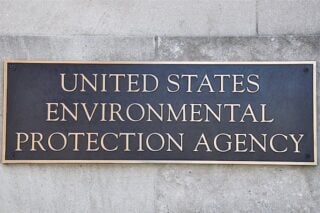Ninety buildings at the University of Maryland have tested positive for asbestos, including five that have been classified by officials as hazardous and therefore restricted to the public. However, there could be more because not all asbestos materials can be safely tested.
The five buildings identified as being dangerous to the public are all on the University of Maryland College Park campus. These include the Engineering Lab Building, H.J. Patterson Hall, the Reckord Armory, the Mitchell Building, and Francis Scott Key Hall.
Facilities Management Operations and Maintenance Director Jack Baker said, “The material, which was used in construction, is harmful only when it is friable, meaning easily pulverized or ground into a powder form. That is when the material can become airborne and when there is a possibility of exposure.”
Exposure to asbestos particles is one of the principal causes of mesothelioma cancer. As a naturally occurring mineral with useful commercial application, asbestos is found in plumbing, insulation, and other building materials and products.
Another important consideration is that the mesothelioma latency period is very long. Often, 20–40 years can elapse from the time of exposure to diagnosis. Furthermore, individuals exposed to asbestos are seven times more likely to develop lung cancer over the general public.
According to Director of Residential Facilities Jon Dooley, “Every single residence hall is safe. We refer students to the residential facilities website if they have any questions about asbestos in their dorm.”
Almost any building built more than 30–40 years ago most likely contains asbestos because of its common use in construction materials. Coincidentally, many other colleges have experienced similar asbestos problems, such as the University of Florida, which discovered asbestos in its residence buildings earlier this year.
Yet the University of Maryland has been removing asbestos from buildings over time. The Armory, Toll Physics Building, Chemistry Building, Cole Field House, the Benjamin Building, and Kirwan Hall were abated last year.
“During the 2015–2016 academic year, about 250 cubic yards of asbestos were taken out of buildings on the campus. During the 2014–2015 academic year, 375 cubic yards were removed,” said Asbestos Program Manager Jennifer Rous.
Anywhere from $250,000–$500,000 per year is budgeted by the campus for asbestos removal. In fact, this university has funded asbestos projects since 1979.
“These are the safest projects that anyone does because of the regulations and also because people are trained to remove asbestos safely,” noted Baker. All work takes place during the evening, after business hours, or on the weekend and contained inside a “negative pressure area.”
Since asbestos hasn’t been used in the construction of buildings since the 1980s, the hope is for the material to eventually go away completely with continued removal. The next dorm up for asbestos removal is Dorchester Hall.





